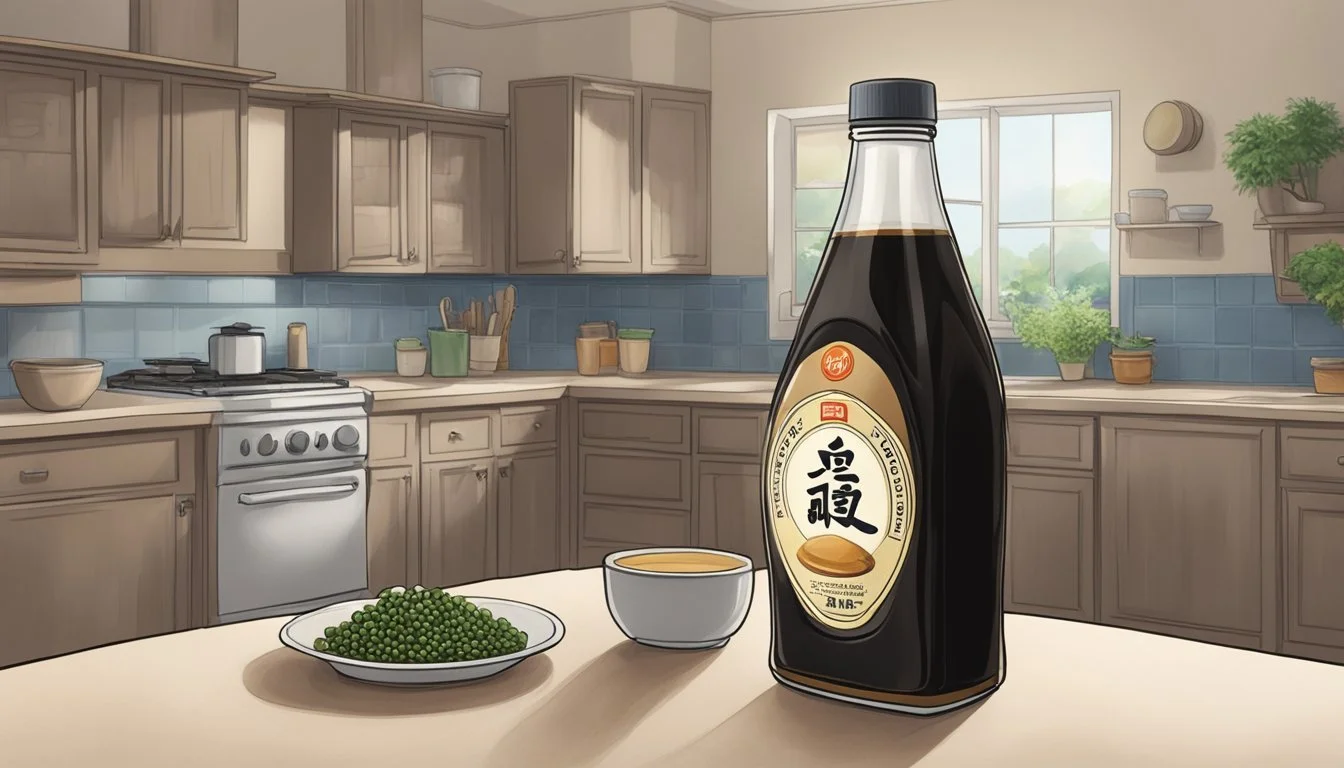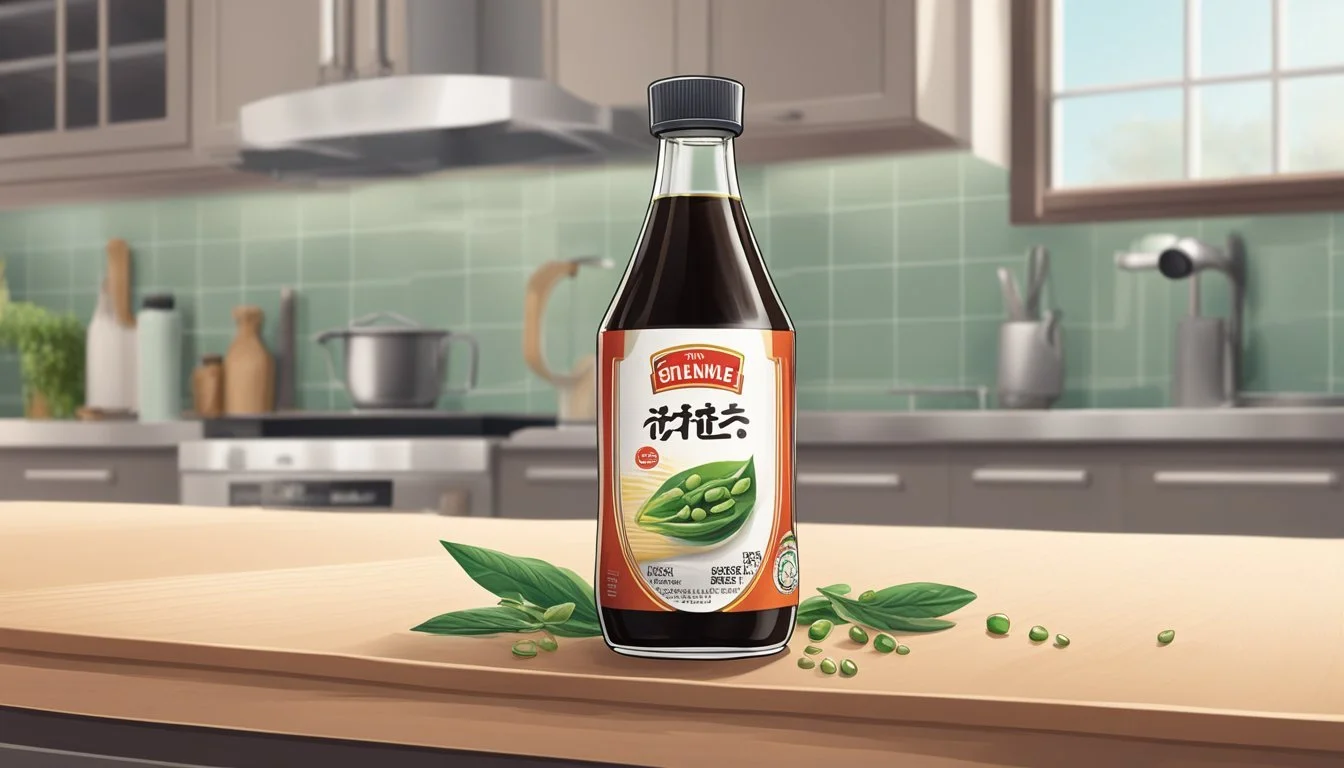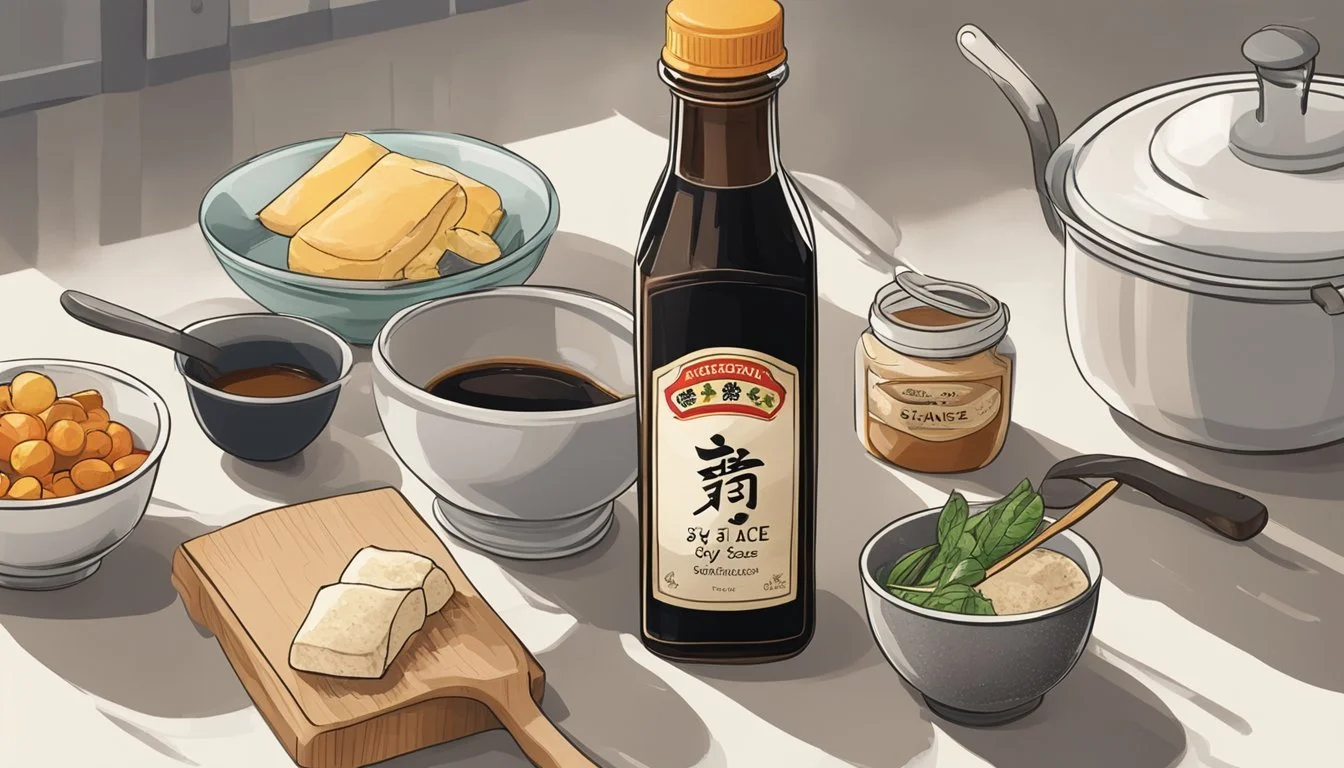Does Soy Sauce Go Bad?
Understanding Shelf Life and Spoilage Signs
Soy sauce, a staple condiment in many kitchens, is acclaimed for its ability to enhance the flavor of various dishes. It is a fermented product made from soybeans, wheat, salt, and fermenting agents like molds or yeast. Due to its high sodium content, soy sauce is inherently resistant to spoilage. This attribute is pivotal in understanding its shelf life and storage requirements. Consumers often question the longevity of soy sauce and whether it surpasses the date printed on the label.
The durability of soy sauce after opening relies on proper storage. When stored in an airtight container in a cool, dark place, or refrigerated, soy sauce maintains its quality for a significant amount of time. Signs that soy sauce may have lost its optimal freshness include changes in flavor, aroma, and appearance. While it is uncommon for soy sauce to spoil in a way that renders it unsafe for consumption, it may lose its characteristic taste, causing it to become less appealing to use in cooking.
Understanding Soy Sauce
Soy sauce is a fundamental seasoning in various cuisines, playing a pivotal role in enhancing flavor profiles with its rich umami character.
History and Types
Soy sauce originated in China over 2,500 years ago and has since diversified into several types. Tamari, initially a byproduct of miso paste production, is a thicker, less salty Japanese variety that often contains little to no wheat, making it a popular choice for gluten-free diets. Shoyu is the traditional Japanese-style soy sauce, brewed with both soybeans and wheat, and it accounts for a significant portion of the global market with brands such as Kikkoman leading the way.
Manufacturing Process
The process of making soy sauce involves a carefully monitored fermentation of soybeans, wheat, yeast, and mold, followed by pasteurization to halt the fermentation. Premium soy sauces are often brewed for several months, or even years, which results in deep, complex flavor profiles. Less expensive, chemically processed varieties are also available, which simulate the taste of fermented soy sauce through chemical hydrolysis that can produce similar flavors in a shorter time frame.
Varieties and Flavors
The flavor of soy sauce can vary greatly depending on its origin and brewing method. Traditional Chinese soy sauces include light soy sauce, which is thinner and saltier, and is used primarily for seasoning. Japanese-style sauces tend to be slightly sweeter and less salty, with a variety showcasing distinctive notes ranging from fish sauce to teriyaki. The rich tapestry of flavors available in soy sauces can complement a wide array of dishes, making it a versatile component in global cuisine.
Shelf Life and Storage Guidelines
Soy sauce's longevity is influenced primarily by storage conditions, and it varies between unopened and opened bottles. Following the correct storage guidelines is key to maintaining its flavor and extending its shelf life.
Unopened Soy Sauce
An unopened bottle of soy sauce can be stored in a cool and dry area such as a pantry or cabinet, away from direct sunlight. If stored properly, it can extend well past the expiration date, typically remaining good for months or even years. While the quality may change over time, soy sauce is unlikely to become harmful if unopened.
Opened Soy Sauce
Once opened, soy sauce should ideally be kept refrigerated to preserve its quality. Peak flavor is typically maintained for 1 to 3 months post-opening. However, it can remain safe for consumption for much longer, with a decline in flavor as the only major concern. The soy sauce should be sealed tightly after each use.
Best Storage Practices
For the best results, always store soy sauce in a cool, dark place, and ensure the bottle is tightly closed after use. Although refrigeration is not necessary for unopened bottles, it is recommended to refrigerate after opening to maintain quality. Proper storage can significantly increase the soy sauce's shelf life and keep it tasting as intended. Avoid leaving soy sauce at room temperature for an extended period, especially once opened, to prevent degradation of its flavor.
Indicators of Spoilage
A soy sauce's lifespan can vary, but there are clear indicators when it has gone bad. They generally manifest as visual changes, alterations to aroma, and differences in texture.
Visual Changes
Color: One may notice a change in color of the soy sauce from its original dark brown hue to a lighter, possibly faded appearance. This can indicate spoilage through either prolonged exposure to air or light.
Mold Growth: Presence of mold or floating particles within the liquid often signifies the product has spoiled. Unlike white films caused by yeast, which can sometimes be removed, mold is a definite sign of spoilage.
Change in Aroma
Smell: When soy sauce begins to spoil, its characteristic rich, salty aroma may change. An off smell or a suddenly strong odor that differs from the normal fragrance signals that the soy sauce may have gone bad.
Texture Variations
Viscosity: Changes in the viscosity or thickness of soy sauce could suggest spoilage. It may either become thicker than usual or conversely, appear waterier, indicating that it's past its prime for usage.
Impact on Taste and Usage
Soy sauce is renowned for its role in enhancing the flavor of dishes; however, over time, its taste can degrade. This section examines how the taste of soy sauce is affected with age, its application in various culinary contexts, and the versatility of its usage beyond cooking.
Flavor Deterioration
Over time, the peak flavor of soy sauce diminishes, although it doesn't become unsafe to consume. An opened bottle of soy sauce is best used within 2 to 3 months to enjoy its optimal taste. Beyond this period, subtle changes may occur:
Saltiness may become more pronounced.
Complex flavors could fade or shift.
Heat, air, and light are factors that can accelerate these changes, emphasizing the importance of proper storage.
Culinary Applications
Soy sauce is indispensable in many Asian dishes and serves multiple roles in the kitchen:
Dipping Sauce: A primary component for sushi and dumplings.
Marinade: Enhances meats with umami and tenderizes due to its acidity.
Condiment: Boosts flavor in stir-fries, soups, and rice dishes.
Its versatility means that even if the taste is slightly past its peak, it can still be effectively used in cooking, where it complements other ingredients.
Alternative Uses
Should the taste of soy sauce not be at its best for direct application, it can find life in other uses:
Cleaning Solutions: Mixed with vinegar, it can polish silverware and jewelry.
Gardening: Small quantities might be used as a plant fertilizer due to the trace minerals and nitrogen content.
By respecting its shelf life and understanding the progression of flavor changes, one can maximize the usage of soy sauce in both culinary and alternative areas.
Health and Safety Considerations
When considering the health and safety aspects of soy sauce, attention must be focused on its sodium content, the importance of food safety practices, and the risks associated with consuming soy sauce that has passed its expiration date.
Sodium Content
Soy sauce has a high salt content which acts as a natural preservative. However, it's essential for individuals to monitor their sodium intake. The American Heart Association recommends that adults consume no more than 2,300 milligrams of sodium per day, with an ideal limit of no more than 1,500 milligrams for most adults.
Typical sodium content of soy sauce: Approximately 1,000 milligrams per tablespoon.
Food Safety Tips
Proper storage is crucial to maintaining the safety and quality of soy sauce.
Storage:
Refrigeration: Recommended to preserve freshness after opening.
Airtight container: To prevent oxidation and contamination.
Shelf Life: Peak quality up to 1 to 3 months after opening but remains consumable for significantly longer if stored correctly.
Risks of Consuming Expired Soy Sauce
While soy sauce is less likely to spoil due to its preservative nature, consumption of any expired food product carries risks.
Risk Factors:
Improper Storage: Promotes bacterial growth.
Exposure to Heat and Light: Can cause degradation.
Signs of Spoilage: Changes in color, aroma, and taste.
Consumers should discard bottles if there is evidence of mold or an off-putting smell, which indicates bacterial contamination. Despite the high salt content providing a hostile environment for bacteria, no food product can be considered completely risk-free.
Frequently Asked Questions
In addressing common inquiries, this section dissects the shelf-life concerns and preservation of soy sauce, providing clarity on how to discern the freshness of both opened and unopened bottles.
Open Bottle Concerns
After opening a bottle of soy sauce, its optimal flavor is generally preserved for 1 to 3 months. It's important to store the opened sauce properly to maintain freshness. Kikkoman, a leading soy sauce brand, suggests an opened bottle should ideally be used within this timeframe, although it often remains safe for consumption after this period.
Unrefrigerated Shelf Life
An unopened bottle of soy sauce can last a significant amount of time, potentially indefinitely, when kept in a cool, dry place away from direct sunlight. Once opened, soy sauce may last up to six months in a pantry without significant quality loss, but freshness is best maintained if the sauce is refrigerated after opening.
Identifying Bad Soy Sauce
To determine if soy sauce has gone bad, one should:
Smell: Sour or off odors are indicators of spoilage.
Look: Changes in color, texture, or the presence of mold and floating particles merit discarding the sauce.
Trust in these sensory cues helps ensure that the soy sauce you're using is both safe and flavorful.
Conclusion
Soy sauce is renowned for its longevity, attributed to its high sodium content which serves as a natural preservative. When stored properly—sealed tightly and kept in a cool, dry place away from direct sunlight—soy sauce maintains its quality for a considerable duration.
Storage Tips:
Unopened bottles can last indefinitely if stored as recommended.
Once opened, it is best to refrigerate to retain quality.
Using soy sauce within 1 to 3 months after opening is optimal for taste, as suggested by leading brands.
However, soy sauce can still be safe for use beyond this period. Consumers are advised to look for signs of spoilage such as:
Mold growth
Off odors
Noticeable changes in taste or color
In the presence of these signs, the product should be discarded. The risk of soy sauce becoming unsafe for consumption due to microbial growth is low, but quality can decline over time. Therefore, one should prioritize optimal storage conditions to ensure its longevity and best quality.






